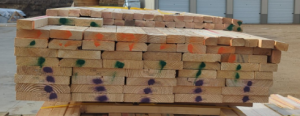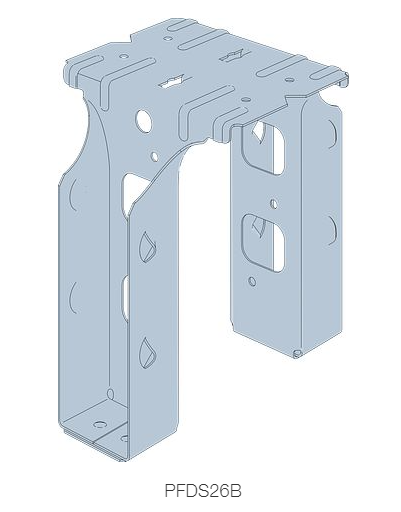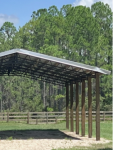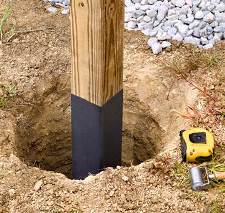Recently, while ‘net surfing, I stumbled across some interesting reading on a website for a hybrid steel frame (posts and roof framework) – but with wood girts and purlins building. I’ll present their information and then either agree or debunk it. This list was for the benefits and/or disadvantages of wood only pole buildings. My comments are in red.
Wood Only Pole Buildings Benefits
1. Trusses are closer together, usually 4’ to 6’ O.C. and very seldom 8’ or more. While closer than all steel, but actually, pole building trusses are often spaced 10’ to 14’ on center.
2. Metal roof is screwed to wood purlins. Chance of leaking is almost nil. True
3. Easier to put in windows and doors with wood girts than steel girts. True
4. Can easily make decisions on windows and door openings after the roof is installed. To an extent, true. Large window and door openings need to work around the locations of the building columns.
 5. Wood is more acceptable as it reflects a comfort zone in building or framing as in a “home”. True, and wood is very user friendly to build with.
5. Wood is more acceptable as it reflects a comfort zone in building or framing as in a “home”. True, and wood is very user friendly to build with.
6. Wood is a non-conductor of heat/cold and is a good insulant and thermo break product. True
7. Easier to find home builder type contractor vs. steel erectors for the building. Less costly per hour for labor and for lower rates on workman’s compensation insurance. Also trades to work with wood are more readily available. True
8. Note: If steel was really that great then the home industry over the past 25 years would have captured more than the ¼ of 1 percent market share they have now. True
9. Wood is warm and more comfortable. True
Disadvantages
1. The purlins are applied horizontally, not vertically, causing a wavy roof system. False – while the purlins are applied horizontally, they do not create a “wavy” roof system. With all of the roof purlins placed “crowns up”, and remaining ups and downs are easily hidden by the ribs of the roof steel. You would be more likely to see waves in an all steel building, because the purlins are 4 to 5 feet apart, as opposed to wood purlins which are 2 to 3 feet apart.
2. The wave of the roof stretches the metal causing screws or nails to pull out. False – even if the waves did stretch the metal, the 1-1/2” “diaphragm” screws we use have a pull out value of 900# with only one inch of effective penetration (based upon dry Spruce-pine-fir).
3. Trusses being 4’, 6’ or 8’ O.C. makes for a good landing pad for the birds to perch themselves on and make a mess of the inside of the building. This statement has me scratching my head. If birds are let into any building, they will perch, land, build nests and make a mess.
4. With wood trusses, there are limitations to head room if and when needed. False – with trusses spaced 10’ to 14’ on center, wide spaces are created between the interior trusses. If added headroom is required, scissor trusses are often a viable option.
5. Columns are not engineered causing not much security with high winds and snow. False – the exception being buildings other than ours, where columns are “built up” using nailed together dimension lumber, with unreinforced splices.
6. Columns 6’ to 8’ O.C. there is no chance to enter in the side of the building with a 10’ or 12’ door or wider. False – Hansen Pole Buildings generally uses sidewall column spacings of 10’ to 14’ which easily allow for wider doors to be placed, without the need for structural headers.
7. Frame assembly and erection typically requires extensive bracing and/or tie downs to prevent collapse until purlins are installed and metal is on roof. False – with columns concreted into the ground, minimal bracing is required once the concrete is poured. A pole building is pretty much “build as you go”. I’ve seen entire “stick built” walls temporarily braced on jobsites waiting installation overnight or over weekends, and wondered “how long” before they fell over in high winds. Or, what was left of them come Monday?
8. Under fire you can open the roof to rid the excess heat will help but usually entire building is lost. True – a catastrophic fire will pretty well destroy any wood framed building, unless it is sprinklered. However, it will also destroy a steel framed building. Any steel exposed to fire is rendered structurally unsound, and there is really no way to test for after-fire strength. Both types need to come to the ground and safely “reconstruct”…by starting over.
9. Non-engineered columns can collapse due to heavy uplift wind, snow/ice loads or fire. True – however having all of the post frame building components, including the columns designed by a sophisticated engineering program eliminates the probability of any structural failure, within the designated design loadings. As a measure of “insurance”, have your plans sealed by a structural engineer, who does the calculations on the columns and connections.
I don’t mind comparing one building structure to the next, as anyone who knows me….knows I have a thirst for “better”. And I am truly not married to any one building system. Unless you can’t give me proof for “better”. Then I stick with what not only has worked for me and thousands of others over the past 30 plus years, but what engineering studies have proven both in the field and under strict laboratory testing. And of course there is always the best test…the test of time.









